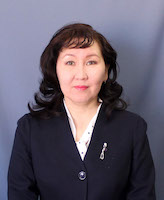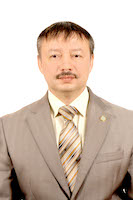Money of the People’s Republic of Tuva in the collections of the Aldan-Maadyr National Museum of Tuva
DOI:
https://doi.org/10.25178/nit.2019.2.9Keywords:
National Museum of Tuva; museum collection; history of Tuva; People’s Republic of Tuva; Salchak Kalbakhorekovich Toka; currency reform; national currency; aksha; monetary circulation; Soviet ruble; bondsAbstract
The Aldan Maadyr National Museum has more than 1,000 coins and banknotes issued by various states and governments of the early 20th century. This article describes the museum’s holding of monetary units issued by the People’s Republic of Tuva. As shown in the museum accessory books, banknotes/coins and securities came mostly as donations by local residents.
Our study of several such collections preserved at the museum allowed us to trace the history of monetary reforms in the PRT. For instance, the 1954 collection sheds light on the history of Tuva’s currency, the aksha, issued in 1935 and 1940 and the features of both respective issues. In 1955, the museum exhibited the 3, 5, 10 and 15-kopeck PRT coins minted in 1934 and remaining in circulation prior to the accession of the PRT into the USSR. In 1956, the museum acquired Salchak Toka’s personal collection. Its owner was the leader of the republic’s Communist party from 1932 to 1973. His collection included not only the Tuvan aksha, but also the bonds – banknotes issued in 1925, 1926, and 1928 bearing the PRT stamp. The latter are an evidence of the transition phase in Tuva’s monetary reform. In 1959, the museum was presented with a collection of Czarist Russia bank-bills of 1898 (1 ruble), 1905 (3 rubles), and 1909 (5 and 10 rubles). They were used at one of the first stages of monetary reform implemented by Ministry of Finance of the PRT in 1923.
The collection of monetary units of National Museum of Tuva is a highly valuable source for studying the republic’s economic development. The surviving samples of monetary units issued in 1935 and 1940, as well as the stamped bills which had been in circulation in earlier periods, allow us to obtain reliable details that may provide insight into characteristic aspects of the rise of the financial system of PRT, political leaders who implemented economic reforms, and the involvement of the USSR in social and economic development of Tuva in the early twentieth century.
References
Anan'in, A. Ya. and Rogov, G. I. (2014). Denezhnye znaki Tuvy [Monetary Units of Tuva]. Antikvariat, predmety iskusstva i kollektsionirovaniia, no. 9 (119), pp. 134–143. (In Russ.).
Aranchyn, Iu. L. (1982) Istoricheskii put' tuvinskogo naroda k sotsializmu [The historical path of the Tuvan people to Socialism]. Novosibirsk, Nauka. 337 p. (In Russ.).
Bicheldei, K. A. (2009) Denezhnaia reforma TNR 1925–1940 gg. — banknoty i monety Tuvy kak predmet numizmatiki (po fondovym materialam Natsional'nogo muzeia Respubliki Tyva) [The monetary reform of the People’s Republic of Tuva, 1925-1944: banknotes and coins of Tuva as a subject of numismatics in the collections of the National Museum of the Republic of Tuva)]. In: Nasledie narodov Tsentral'noi Azii i sopredel'nykh territorii: izuchenie, sokhranenie i ispol'zovanie [Heritage of the peoples of Central Asia and adjacent territories: research, preservation and use] (September 9–10, 2009, Kyzyl): in 2 vol. / ed. by U. B. Nurzat. Kyzyl, KTSO «Anyiak». Vol. 1. 199 p. Pp. 18–26. (In Russ).
Denezhnoe obrashchenie i kredit SSSR [Money circulation and credit facilities in the USSR] (1986) / ed. by V. S. Gerashchenko. Moscow, Finansy Publ. 244 р. (In Russ.).
Iezuitov, V. M. (1956) Ot Tuvy feodal'noi k Tuve sotsialisticheskoi [From feudal Tuva to Socialist Tuva]. Kyzyl, Tuvan book publ. 208 p. (In Russ.).
Istoriia Tuvy [The History of Tuva] (2007): in 3 vol. / ed. by V. A. Lamin. Novosibirsk, Nauka Publ. Vol. 2. 430 p. (In Russ).
Kopeel, V. A. (1981) Den'gi i denezhnoe obrashchenie v period TNR [Money and money circulation in the PRT]. In: Po puti Velikogo Oktyabrya. K 60-letiyu Narodnoi revolyutsii v Tuve [In the footsteps of the Great October. Dedicated to the 60th Anniversary of People's Revolution in Tuva]. Kyzyl, Tuvan book publ. 156 р. Pp. 81–89. (In Russ.).
Tatarintsev, B. I. (2015). Etimologicheskii slovar' tuvinskogo yazyka [An etymological dictionary of the Tuvan language]: in 4 vols. Abakan, OOO Kooperativ «Zhurnalist». Vol. 1. 398 р. (In Russ.).
Tul'chinskii, L. I. (1961). K voprosu o zarozhdenii i razvitii finasovo-kreditnoj sistemy v Tuve (1921–1944 gg.). [On the rise and development of the system of finance and credit in Tuva, 1921-1944]. Uchenye zapiski. Vol. IX. Kyzyl, Tipografiya upravleniya kul'tury. Pp. 269–274. (In Russ.).
Kharunova, M. M.-B. (2018) Ekonomicheskii terminy v dokumentakh Tuvinskoi Narodnoi Respubliki (1921–1944 gg.) [Economic terminology in the documents of the People’s Republic of Tuva (1921–1944)]. The New Research of Tuva, no. 2 [online] Available at: https://nit.tuva.asia/ nit/article/view/775 (access date: 12.01.2019). DOI: 10.25178/nit.2018.2.9 (In Russ.).
Published
How to Cite
Kharunova M. M.-B., Kharunov R. Sh. and Sanchai Ch. O. Money of the People’s Republic of Tuva in the collections of the Aldan-Maadyr National Museum of Tuva. The New Research of Tuva. 2019, № 2. URL: https://nit.tuva.asia/nit/article/view/849 (access date ... ). DOI: 10.25178/nit.2019.2.9
Issue
Section

Author(s) license holder(s) grant rights for their work to the journal (grantee of a license) under the simple non-exclusive open license in accordance with Art. 1286.1 «Open license for a research work, work of literature or fine arts», Civil Code of the Russian Federation.
New Research of Tuva publishes articles under the Creative Commons Attribution-NonCommercial license (CC BY-NC).
Since it is an open license, author(s) reserve the right to upload the article to their institutional repository, submit it to another journal (if it allows republications), or republish it on their own website (in full, or in part).
However, several conditions apply here:
a) The republished version must always contain the name(s) and affiliation(s) of the author(s), the original title and the hyperlink to the original version on the New Research of Tuva website;
b) It must be in open access, free of charge, and no category of readers must be in any way whatsoever advantaged over general readership.
c) should the contribution be submitted elsewhere by its author(s) without substantial modification (30% or more of original text unchanged), the body of the article should contain a disclaimer that the original version was published in New Research of Tuva (with a link to the respective page)
The CC-BY-NC is a non-revocable license which applies worldwide and lasts for the duration of the work’s copyright.











